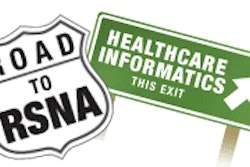At healthcare organizations across the U.S., patient safety is at risk every time critical information is not available to make an immediate diagnosis at the point of care. At the same time, healthcare providers face a balancing act as they try to trim costs while improving patient safety and the quality of care.
As digital information management becomes ubiquitous, healthcare organizations need to adopt strategies to manage the life cycle of patient information that must be kept for decades. Applying information life cycle management (ILM) methodologies enables hospitals to take control of information throughout a patient's lifetime, making information available where and when it is needed. Investments in technology solutions can also improve clinical workflow while ensuring compliance with regulations.
IT challenges in healthcare
Healthcare is one of the most information-intensive industries of any kind. As a result, the clinical workflow benefits that can be achieved with a unified patient view are significant, reducing hospital stays and enhancing the overall patient experience. According to the American Hospital Association, a third of U.S. hospitals operate in the red because of inefficiencies in information accessibility needed to support patient care decision-making.
For instance, many physicians still manually write orders and request information from multiple departments both within and outside the organization. Fulfilling these requests can take days because of the time needed to retrieve the information.
At the same time, hospital staff duplicate efforts because patient information is manually input two to three times, further contributing to rising healthcare costs and increasing the risk of human errors. By moving paper-based and manual processes online, healthcare providers will ultimately gain operational efficiencies leading to accelerated clinical decision-making.
Additionally, federal, state, and HIPAA regulations drive the need for an improved approach to information management. Federal and state regulations require that hospitals retain patient records for the life of a patient and beyond, while HIPAA requires organizations to implement business continuity strategies to protect patient information. Consequently, hospitals must implement policies and systems that safeguard information over its entire life cycle to ensure compliance.
Information life cycle management
Applying ILM strategies to overcome these challenges and manage complex information requirements is a growing trend within healthcare organizations. The ability to effectively manage, retrieve, archive, selectively delete, and reuse information generated throughout the healthcare continuum will ultimately improve both the patient experience and operational efficiencies.
Patient information may change in value as it moves through its life cycle. However, these changes typically do not occur in a linear fashion. A patient entering the emergency room may make an inactive and aging clinical test highly critical, requiring nearly instant availability for comparison during a new cardiac episode.
In addition, authorized caregivers require patient information immediately, whether at a remote location, such as a home office, or within the hospital unit. This need is complicated further as a single online patient view may include x-ray images, medication, allergy histories, and previous care episodes. All of this information is generated by various applications, departments, and physicians, and is often stored on different systems and media.
By improving online clinical workflow and building fully digitized and networked healthcare environments, physicians gain immediate access to live and archived PACS and electronic patient record (EPR) data to make real-time, critical clinical decisions. With rapid access to complete, online patient history, caregivers can make accurate diagnoses faster, uncover medication allergies, and improve patient safety, while delivering a consistently successful patient outcome.
Implementing an ILM strategy overcomes the challenges associated with healthcare information management. This includes:
- Providing a single view of all patient information across multiple clinical and financial systems across the system to develop a safe treatment plan.
- Improving storage utilization with tiered platforms and increased visibility into all enterprise information.
- Simplifying management through increased automation, and by integrating process steps and interfaces to the individual tools in place today.
- Offering a wider range of backup, protection, and recovery options to balance the need for continuity with the cost of losing specific information.
- Improving compliance by having better knowledge and control upfront regarding what data needs to be protected and for how long.
The life cycle of a patient record
The Healthcare Information and Management Systems Society (HIMSS) Leadership Survey found that improving patient safety and reducing medical errors remain leading business issues and information technology (IT) priorities for chief information officers (CIOs), followed closely by HIPAA compliance matters. An ILM strategy recognizes that hospital information needs change over time throughout multiple care episodes with multiple providers. This approach means that all the information physicians need to deliver high-quality patient care remains accessible regardless of age.
Building an ILM strategy
ILM strategies utilize a combination of hardware, software, and services, typically implemented in a phased approach. For example, healthcare organizations may start by classifying data and applications on the basis of clinical priority or business rules and policies to enable differentiated treatment of information.
Next, automated policies can be implemented by leveraging information management tools, including the creation and disposal of patient data. An ILM strategy also involves managing the environment with integrated tools that interface with multivendor platforms and reduce operational complexity of point solutions. Finally, CIOs can tier their storage resources by classes of data, storing information in the right type of infrastructure based on its current value.
Bottom line
An ILM strategy enables healthcare CIOs to realize a significant return on IT investment by improving clinical workflow, reducing inefficient processes, increasing caregiver productivity, and lowering costs.
ILM also enables providers to address HIPAA security and transaction standards, including e-mail archiving, applications infrastructure, consolidation, replication, and backup and continuity solutions. More importantly, by providing fast, efficient access to critical information, healthcare organizations can improve their ability to provide safe, quality patient care.
By Roberta Katz
AuntMinnie.com contributing writer
December 31, 2004
Roberta Katz is director and global solutions leader for EMC Healthcare - Life Sciences Solutions Group.
Related Reading
Study asks: If residents snooze more, do patients lose out more? December 12, 2004
Patient identification aided by picture wristbands, December 2, 2004
PACS plus paperless proves powerful, November 29, 2004
Copyright © 2004 AuntMinnie.com



















